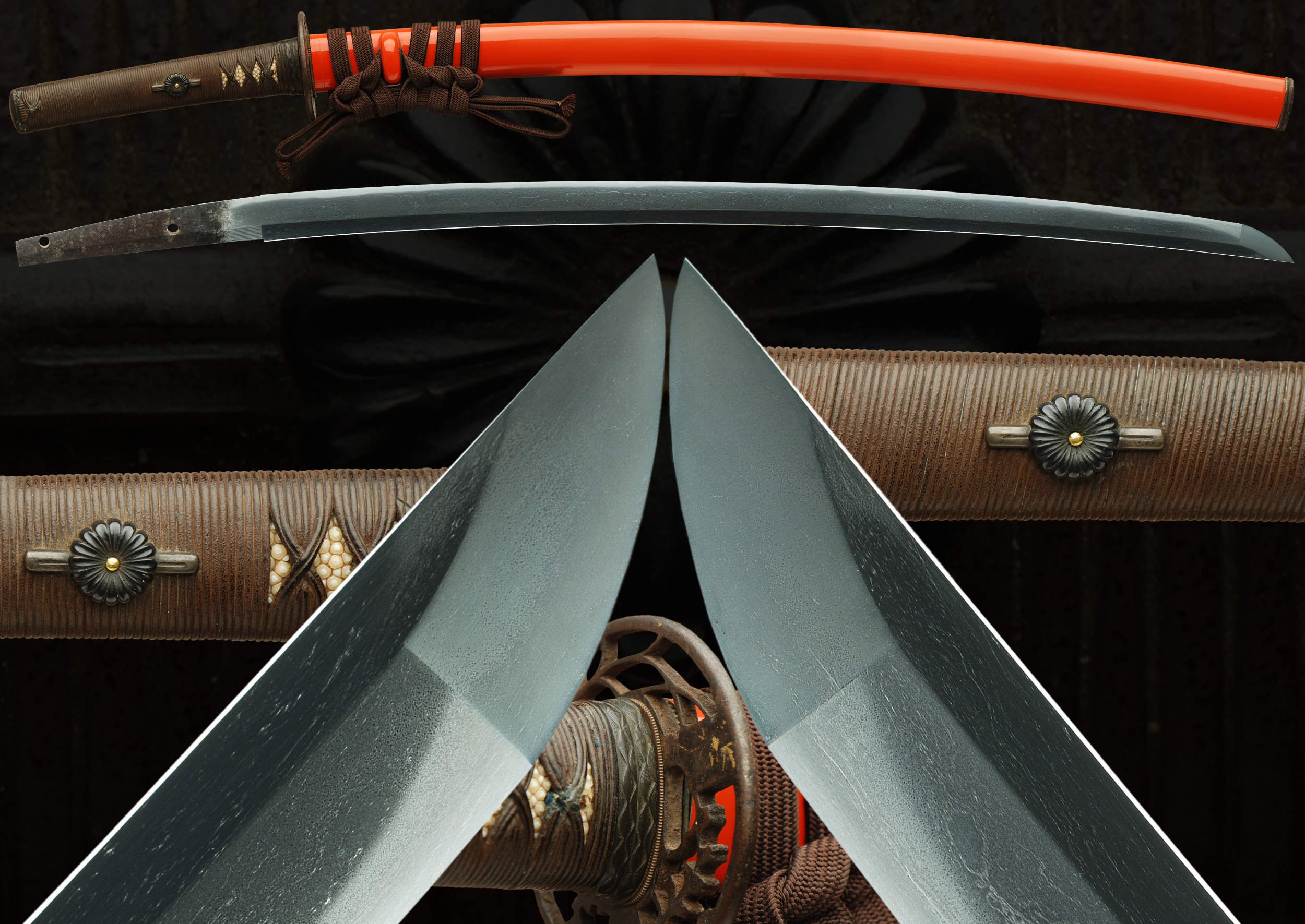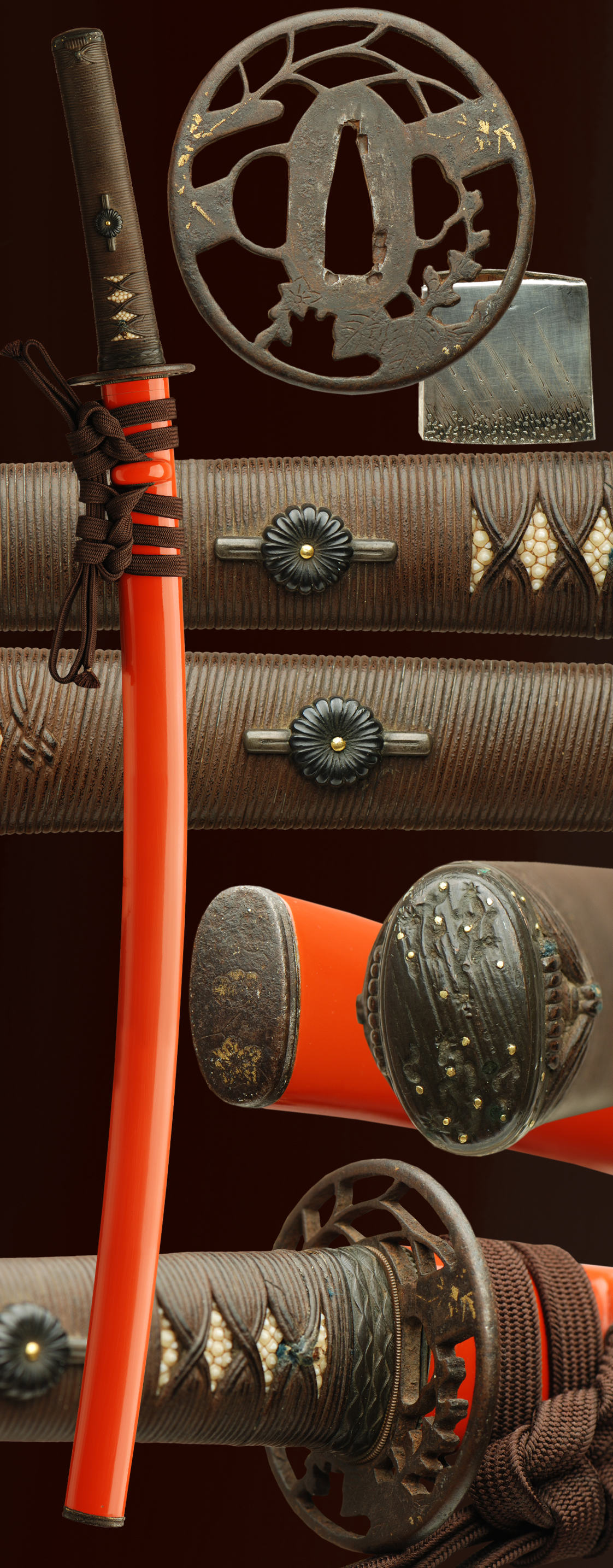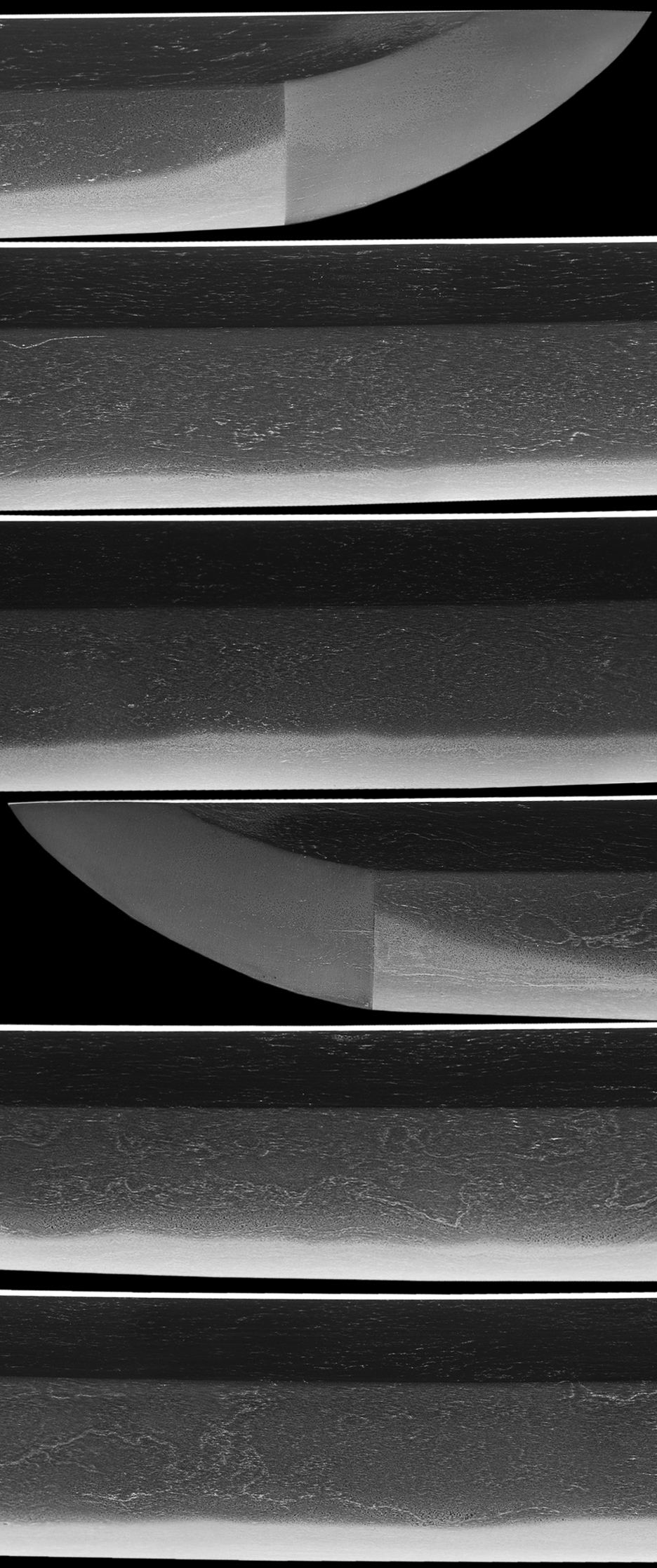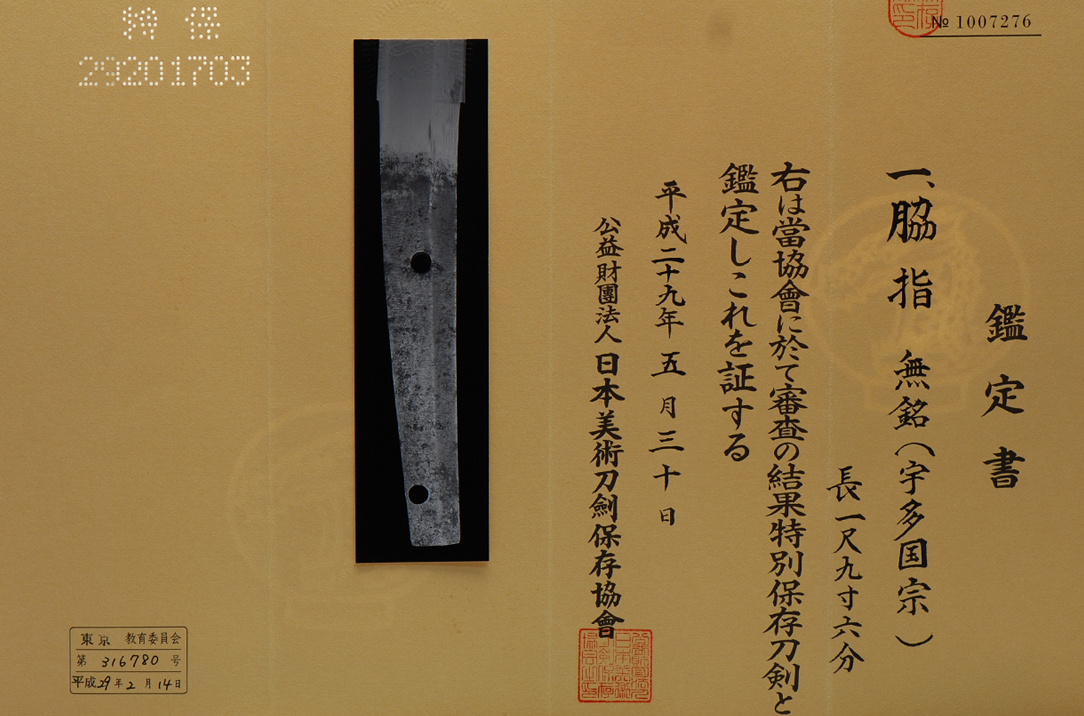A beautiful UDA KUNIMUNE koto O-wakazashi (katatauchi or ko-dachi size) just shy of katana length that has high quality workmanship and a beautiful sugu-ha based hamon with gentle gunome/midare here and there with utsuri. Many hataraki / activity can be found with Sunagashi, Kinsuji, chikei, Ji-nie and utsuri can be seen also. Uda school swords come from the Yamato tradition and this can be seen and appreciated within this blade made in the old Yamato style. The condition of this koto piece is wonderful as can be seen in the pictures. A very robust Hamachi and Munemachi can be found. It is in a good polish. The pictures do not do justice to this sword. The hamon is very nicely done with a thick nioi-guchi that flares up here and there.. It has many hataraki and ko-nie appear. The hada is very well forged with a very oily appearance of swirling itame with mokume. The boshi is ko-maru and longish. This koto O-wakazashi has an elegant shape and is very well balanced. The curvature is very noticible and is text book UDA. The blade is papered Tokubetsu-Hozon Token by the NBTHK attesting to the swords quality, age and school. The blade is in shirasaya with sayagaki by Tanabe. Overall this is a fine Japanese Koto O-wakazashi. The blade also comes with a beautiful rain pattern silver foiled habaki.
The Uda school is said to have originated in Yamato province.
The founder Kunimitsu moved to Ecchu province at the end of the Kamakura period. His son was UDA KUNIMUNE. The following is the lineage for these smiths:
KUNIMUNE UDA [OEI 1394 ETCHU] CHUKOTO CHUJOSAKU
He is the younger brother of Kunifusa, and is called Saemonnoj. As for his being reputed to have been of the oan era, the era was probably moved back. His works are few.
Hawleys:
KUN 652 (Rated at 75 points)
YAMATO TRADITION
Uda school originated in Yamato province and was founded by Kunimitsu. His son Kunifusa learned under Norishige that produced a different style of jitetsu by mixing hard and soft iron. This is called matsukawa-hada or norishige-hada. The hada on these swords is generally course in areas and is typical of the Uda school.
~~~~~~~~~~~~~~~~~~~~~~~~~~
This is an exquisite sword . Many of the swords from this time period were cut down and lost there signatures as this one but still retains all the characteristics of this smith and school. You will see some coarse hada in places as is common from this school and is an important point to note for this school.
The hada on this blade is excellent and very rich looking. It has a dark look and is very tightly forged in many places. The hamon is also beautiful with many hataraki beautifully visible in hand. It is also a very healthy hamon considering the age of this sword. The shape of this sword is very elegant and it has a fine sweeping sori. The boshi is also very healthy. Overall this is a very fine and unique early sword retaining its original appearance. This is why this sword received highly rated Toku-betsu papers.
A beautiful koshirae with lacquered saya that is finished in red. The tsuba is an interesting sukashi style and the balance of the furniture appears to be of a wave pattern and 16 petal chrysanthemom menuki. There is brown leather ito and brown sageo to match. All in all a very attractive set of mounts for a beautiful sword in the Uda tradition.
- Mei: Mumei
- Date: Koto (1300’s-1400’s)
- Nagasa: 23-3/8 inches
- Sori: 16.5 mm
- Width at the ha-machi: 28.9 mm
- Width at the yokote: 20.7 mm
- Thickness at the mune-machi: 6.6 mm
- Construction: Shinogi zukuri
- Mune: Iori
- Nakago: Ubu
- Kitae: mokume tachi
- Hamon: Ko-Midare
- Boshi: Maru
- Condition: Good polish
Click to Enlarge Image
SAYAGAKI INFO:
越中國宇多国宗
大磨上無銘黒ミアル肌合ニ大和氣質ヲ示ス直刃ヲ焼キ帽子ガ一枚ニ近キ深ヒ状トナルケド室町ノ同工ト鑒スベキハ妥當也
刃長壹尺四寸六分弱有之
時在戊戌泰月
探山識「花押」
Etchū no Kuni Uda Kunimune
Ō-suriage mumei kuromi aru hada-ai ni Yamato kishitsu o shimesu suguha o yaki bōshi ga ichimai ni chikaki fukai-jō to naru kedo Muromachi no dōkō to kangamisubeki datō nari.
Jizai tsuchinoe-inu taigetsu
Tanzan shirusu + kaō
Uda Kunimune from Etchū Province
[The blade is] ō-suriage mumei but the forging structure with tendency towards a blackish appearance shows characteristic features of the Yamato tradition and with the hardening in suguha and the bōshi which almost appears as ichimai, the blade can be attributed to a Uda Kunimune smith of the Muromachi period.
Written by Tanzan [Tanobe Michihiro] in January 2018 + kaō
(shipping and insurance included)
Email us if your interested in this item and remember to include the order number for this item: fss-776.
Click to Enlarge Image
Click to Enlarge Image
NBTHK TOKUBETSU PAPERS
Kantei-Sho (鑑定書) – Appraisal
No 1007276
wakizashi, unsigned: Uda Kunimune (宇多国宗)
nagasa ~ 59.4 cm
According to the result of the shinsa committee of our society, we judge this work as authentic and rank it as tokubetsu-hozon-tōken.
May 30, 2017
[Foundation] Nihon Bijutsu Tōken Hozon Kyōkai, NBTHK (日本美術刀劍保存協會)
For Sale


























